Giff's Birding Pages
Email - derek@derekgifford.co.uk
Birding in Australia
My Birding Activities - How it all started - and beyond
My
interest in the natural environment started when my family moved out to Castle
Bromwich in the mid 50s which, at that time, was on the outskirts of Birmingham
and surrounded by Warwickshire countryside. I spent many happy days wandering
over the fields watching mostly common birds. One of my abiding memories is the
sound of singing Skylarks over a field near our house which accompanied my
playing in the garden all day-long. The field was eventually built on to provide
a new primary school and, sadly, the Skylark went with it.
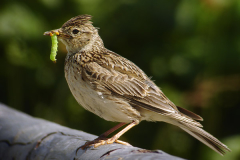
The Skylark
(Photo by Daniel Pettersson)
From
those first experiences I developed a love of the countryside and wild places as
well as a basic grounding through primary school outings in what was then called
‘nature study’.
It
wasn’t until I joined the Ordnance Survey and spent much of my time in the
countryside revising rural large scale plans that I began to take even more
notice of the environment although it was a mainly passive interest. However, my
knowledge of common bird species increased as well as some accrued wisdom on
general wildlife.
Then
I changed career and moved to Lancashire. My first teaching post was in
Skelmersdale new town. Not an inspiring wildlife place at first thought but in
fact I lived near a clough (narrow wooded valley) that led up to the local
country park. My transition to birding started with the purchase of a cheap pair
of binoculars from Dixon’s. Cheap they might have been but they opened up a
whole new world to me because now I could see the birds much more easily and in
greater detail. I was hooked!
I
soon upgraded to a pair of Russian made 'bins' and finally, when I realised that
this was developing into a serious hobby, I bought a pair of Zeiss 8x40 Dialyt
binoculars that I still have as my ‘back up’ pair to this day. Well, they
are guaranteed for life after all!
In
the late 70s and early 80s I developed my identification and observation skills
either alone or with a few birding friends (our Galloway weekends in the
February half-terms were legendary) and also with a local group of the
Lancashire Wildlife Trust.
My
next revelation was when I bought my first telescope in the mid 80s and all
those little waders that I couldn’t identify out on the sands and marshes of
Morecambe Bay suddenly became lifers.
When
I moved to Mawdesley, in Lancashire, I began to work a local ‘patch’ for the
first time although I didn’t send any of my records to the County recorder.
When I moved to my current address in Roby Mill I contacted Maurice Jones, the
county recorder at that time. He was delighted to receive records from an
otherwise under-recorded area. Let this be a lesson to anyone who thinks their
area is of no interest to others. I have sent in my Lancashire records annually
ever since.
All
my birding activities had so far taken place in Britain and Europe but in 1995 I
visited New Zealand and Australia and my world birding exploits began. The
birding in the Antipodes took me back to ‘basics’ with whole new families of
birds to identify let alone individual species. The experience helped me
tremendously later on when I started lecturing in ornithology with special
reference to identification skills.
Since
then I’ve been back to Australia four more times and developed a reasonable
list of species numbering c350.
In
between those times I’ve been to the Seychelles on an organised birding trip
where we saw all the endemic species, to Canada (initially to see the
superb Canadian folk group Tanglefoot) where I had an incredible morning’s
birding in a Toronto park watching migrant warblers and to Cuba where a day’s
guided birding with a local birder increased the world list by a good few
endemic species.
I
also had a short trip to Chicago in September 2004 and spent a pleasurable
morning with some local birders looking at a number of the same warblers I’d
seen in Canada but now in their autumn plumages.
A
trip of a lifetime to Antarctica organised by Wildwings in January 2005 provided
a small tally of species but what quality! My first ever wild Penguins, lots of
new Albatrosses and a fabulous Snow Petrel. We also saw lots of whales and the
most stunning scenery.
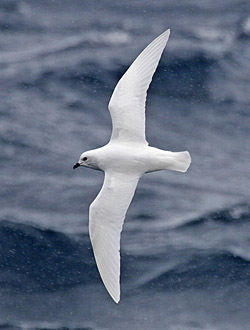
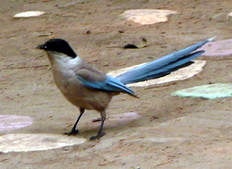
The Snow Petrel and the Azure Winged Magpie
In
2006, I visited my ‘last’ continent - Africa. As expected, my life list took
an enormous boost with so many new species and some excellent guided birding
with Tropical Birding in the Karoo area. Also in 2006, I visited Hong Kong and
China where I didn’t get a great deal of time to bird but managed to get quite
a few new species onto the list including some stunning Azure-winged Magpies.
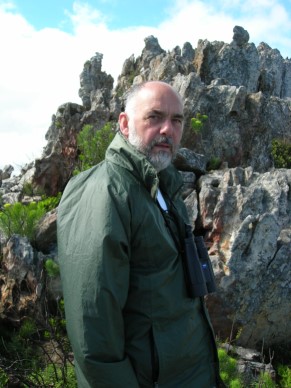
Looking for Cape Rockhopper in South Africa - 2006
In
2007 I went to Finland and Russia on an organised trip with Sunbird. The timing
wasn't good because in this year the hoped for owls hadn't bred in Finland and
we hit the midge peak! The birding in Russia was more productive with a number
of 'difficult' lifers found by our excellent guides.
Christmas
and New Year 2008/9 was spent in Cuba again where I managed to catch up on a few
species I'd missed in 2003 most notably the superb Cuban Trogon.
In
October 2009 I went to Panama and stayed at the fantastic Canopy Tower and
Canopy Lodge where, with the help of our knowledgeable guides, I recorded over
270 species in less than a fortnight!
A photo from my trip to Panama
My
trips to Australia involved stop overs at Singapore where, of course, I have
also done a lot of birding with this year (2010) being very productive because I
hired a car and got to some previously unvisited areas on the island.
At the beginning of 2010 my world life list stands at over 1,500 species.
When
I took early retirement from teaching I was given the opportunity to lead a
week’s bird tour in May in the Cairngorm area of Scotland by some friends who
own a B&B near Aviemore. We saw over 100 species in the week including such
specialities as Red throated Diver, Slavonian Grebe, King Eider, Golden Eagle,
Red Kite, Hen Harrier, Osprey, Ptarmigan, Hooded Crow, Crested Tit, Ring Ouzel
and Scottish Crossbill.
The
only local species we dipped on was Capercaillie! Obviously, my local knowledge
and previous experience of the area helped and my clients were sent home very
happy and with numerous lifers on their lists.
Later
on I guided small groups from the
Midlands round my own local area in the North-west for day trips. Notable among
the species I found were Bittern, Short & Long -eared Owls and our local
regular over-wintering species such as Whooper Swan and Pink-footed Geese. We
also looked at a lot of over-wintering waders. For most of the groups Bittern
and the two owls were lifers.
I
would have liked to developed this side of my activities further but other
things took over like lecturing in ornithology (see other section) and a lot
more singing work.
Now
I’ve retired from lecturing I’m doing more local guiding in the North-west
most notably for Fir Tree Farm in King's Moss, St. Helens the details of which
can be found in the Bird Watches section on this page.
So if you are a budding birder and live in or want to visit the North-west for some guided birding then get in touch. My details are on the web site.
I
began lecturing in ornithology at Myerscough College near Preston in the autumn
of 2001 at the bequest of a friend who was a lecturer and folkie.
The course was mainly outdoor work with the main purpose being to improve the bird identification skills of the students as well as giving background on bird conservation issues. When the college decided to end the ornithology module for their foundation degree in conservation and ecology I finally retired from teaching.... I think!
The
research for this was inspired by a request to the general public from Mark
Cocker who was editing Birds Britannica and asking for folk lore on birds.
Obviously my first thought was birds in folk song.
As
a result I acquired a a vast amount of material through the research I’d
carried out which has been developed into three shows which combine my two
primary interests - folk music and birding. In the shows I play various bird
songs and calls which the audience is invited to identify. Then I perform the
song or songs in which the bird is featured. Sometimes there is more than one
bird featured in a song or there is more than one song about the same bird.
Following
the initial success of the original show the two follow up shows are called
‘More Birds in Folk Song’ and 'Even More Birds in Folk Song'. These have
had several outings too.
Finally,
due to the interest from many folk in the research findings I have accrued, it
has led to the possibility of a completely separate book being published under
the title ‘Birds in Folk Song’. This is being written at the present time.
Details of publication will be posted here as soon as it nears completion.
Click HERE to view details of my "Birds in Folksong" CD
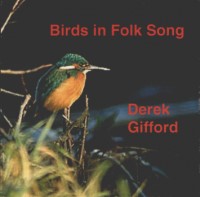
(Please telephone the number to reserve a place on the watches)
|
May 2016 (Dates to be confirmed) |
Dawn Chorus Walk, Fir Tree Farm, Kings Moss, Rainford | 01744 894959 |